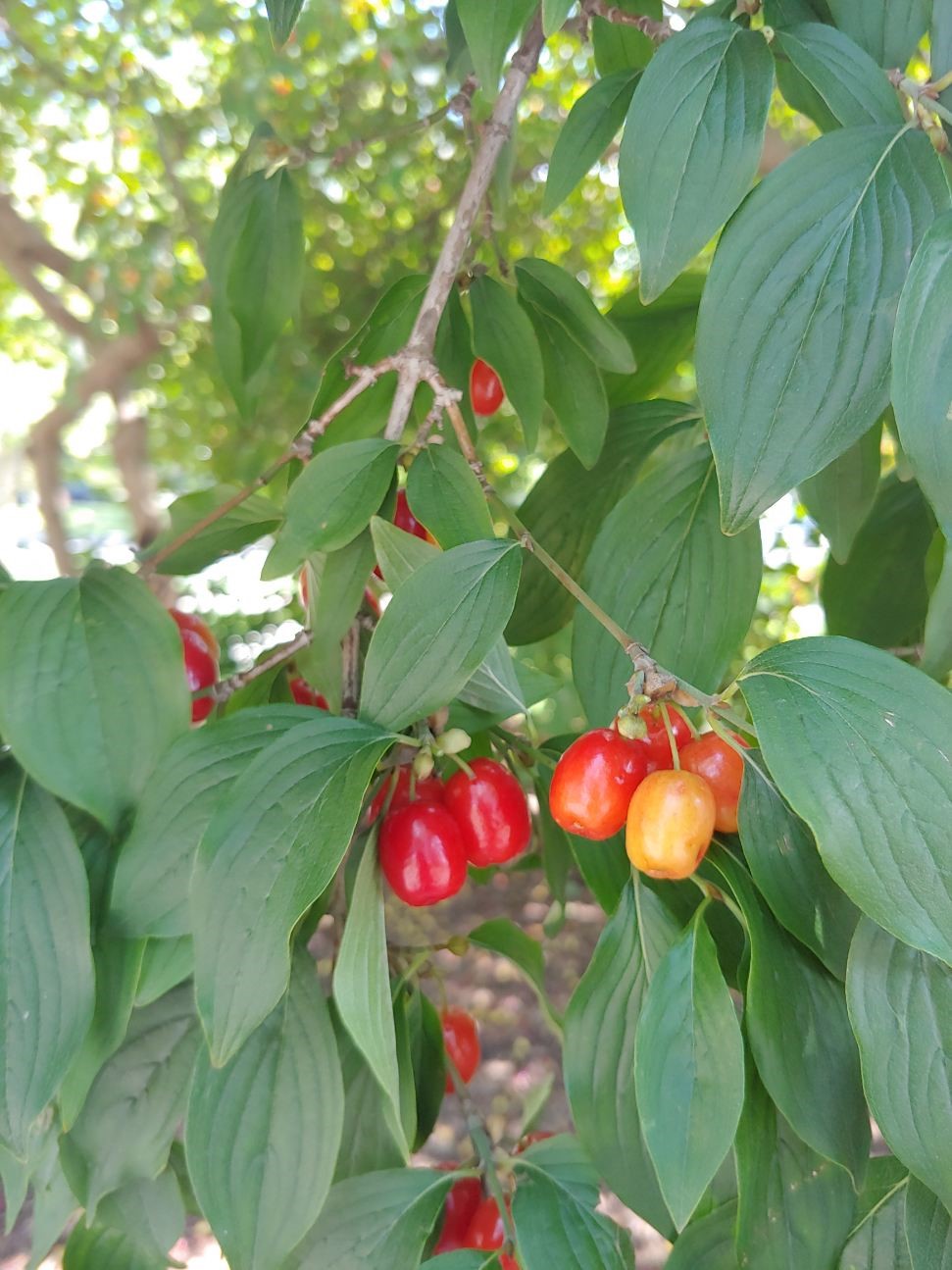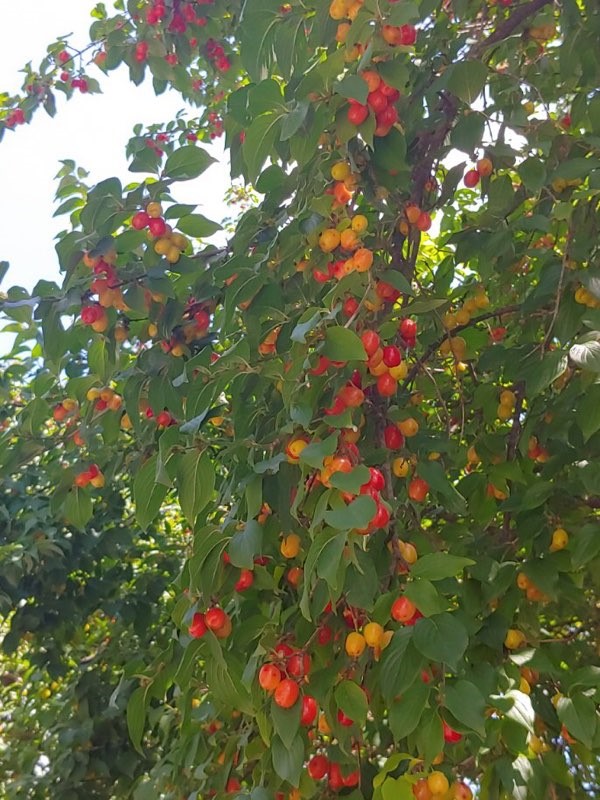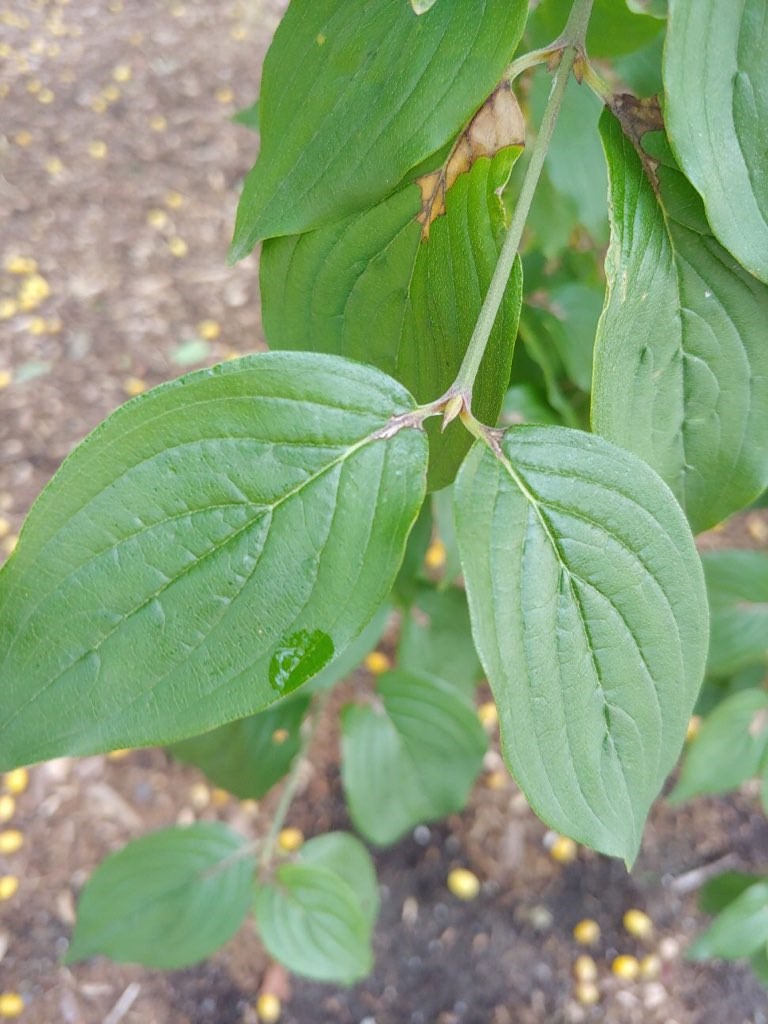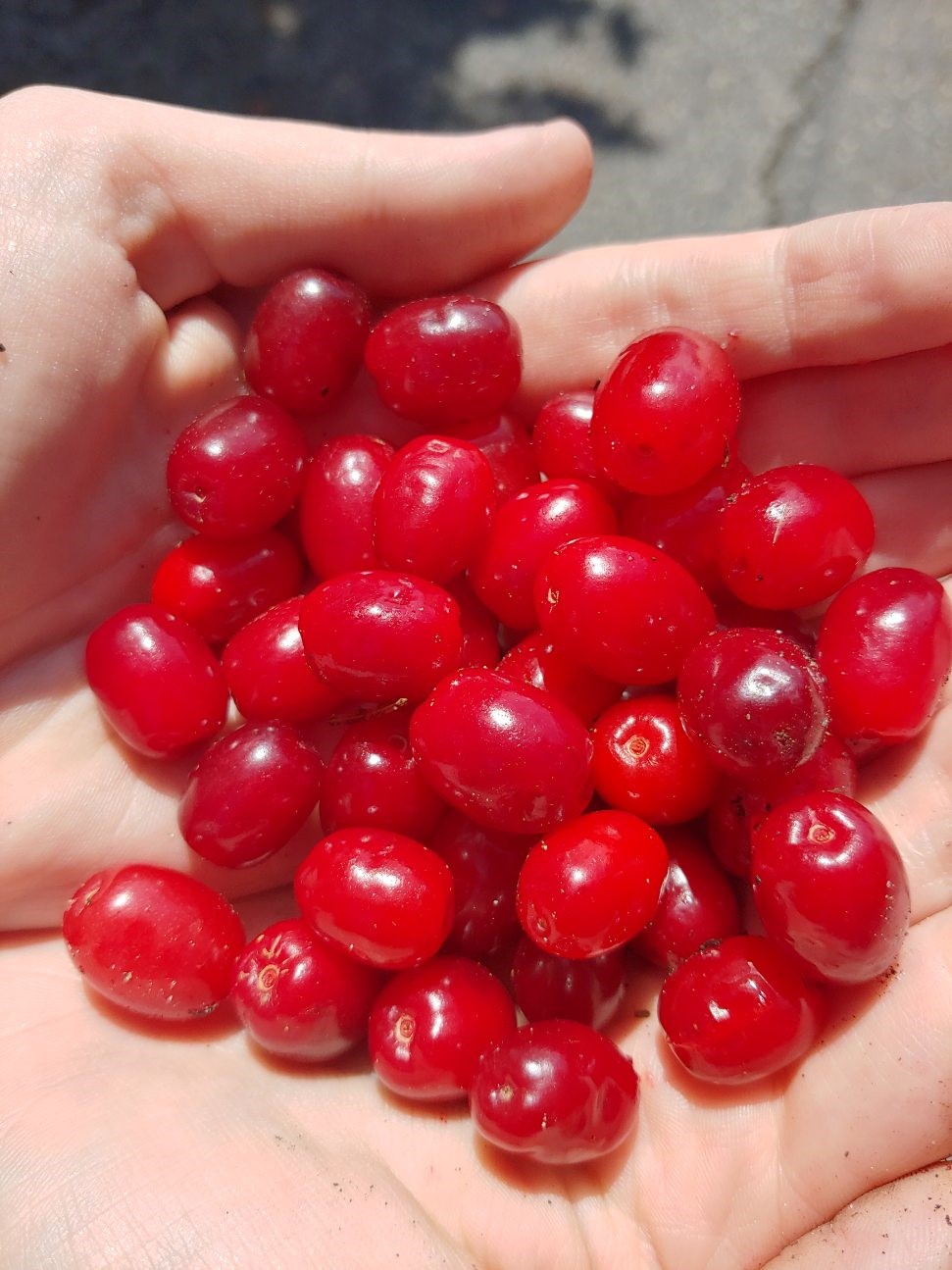Guest Authors: Sara Turner-Smith, dietetic intern and Amy Stone, Extension Educator Agriculture and Natural Resources, partnering with OSU Extension, Lucas County Family and Consumer Sciences.
Summer is the season when many fruits ripen for us to enjoy. You most certainly have heard of cherries and have hopefully enjoyed eating the round tree fruits. But, have you heard of a Cornelian cherry dogwood tree (Cornus mas)? Not a true cherry, but its oblong shaped fruit turns red, just like the common cherries.
Cornelian cherries are especially high in polyphenols which are a type of phytonutrient. These nutrients found in plants protect against stressors in the environment surrounding them, which keeps their nutrient quality high. They can strengthen our immune system, and also have anti-inflammatory effects.
Phytonutrients may also play a positive role in the prevention or treatment of certain cancers by reducing oxidative damage to cells, and slowing the growth of cancer cells. Type two diabetes can be better managed through improved sensitivity to insulin, allowing for better blood sugar control. Heart disease and neurodegenerative disease have the potential to be prevented through the consumption of phytonutrients as well.
Foods that contain phytonutrients tend to be fruits and vegetables, which are high in nutrients and fiber, so it is uncertain whether the preventative properties are directly related to phytonutrients or to the high nutritional value these foods contain.
At this point you might be asking yourself how to incorporate new foods high in these nutrients so you can benefit from them. While not commonly available in your local grocery store, you may be able to find cornelian cherries at a farmer’s market or farm stand. You could also purchase the plant for your yard with it having multiple purposes in the landscape including being a regular provider of fruit each summer. This is an example of a plant to incorporate for edible landscaping. In additional to being edible for people, bees also enjoy the plant for nectar and pollen.
The cornelian cherry dogwood can be small tree, or large shrub, depending on how it is trained and managed in the landscape. It can reach heights of 20 to 25 feet at maturity. It can be planted as a hedge, in mass, or as a single specimen. It does well in most sites, but does prefer a well-drained soil. An added benefit is the plant’s yellow flowers in early spring before the leaves emerge. While the flowers are small in size, when seen in mass it can be an attention grabber; especially in the spring when there isn’t much blooming. The tree is native to Europe and Asia.
Cornelian cherries eaten on their own tend to be bitter, and their flavor is described as a cross between a tart cherry and a cranberry. If they are not a commonly enjoyed food in your community, it might be hard to find recipes to use them. It is not uncommon to use them for jelly. Whether making a jelly or cornelian cherry sauce, you would probably add some type of sweetener such as honey. Additional flavors to add are cinnamon or vanilla. This seed company describes a few ways to prepare cornelian cherries such as sherbet, juice or fruit leather.




